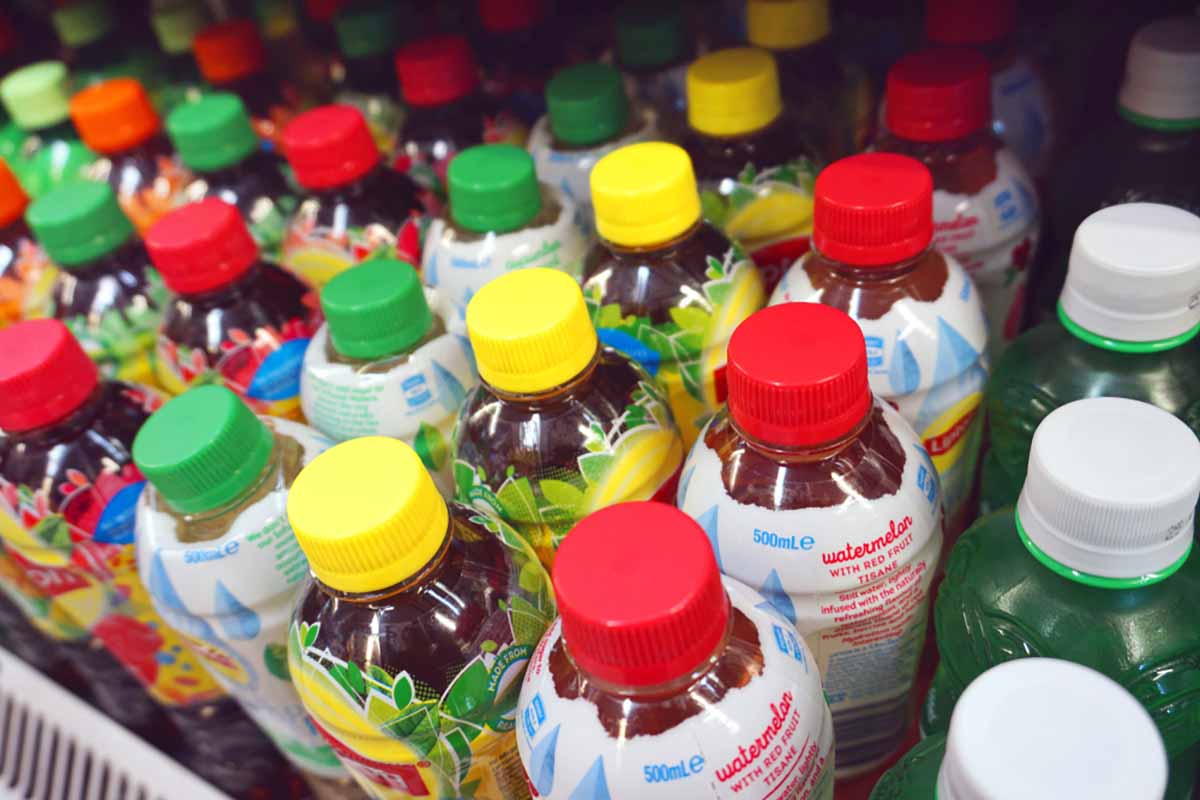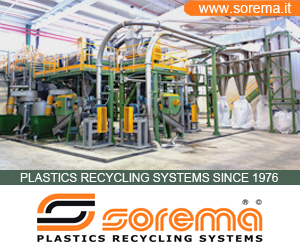
PET bottle labels can be problematic to the plastics recycling process, but a PET bottle label innovation recently received a letter confirming its compatibility. | Ho Su A Bi/Shutterstock
Testing has shown that a label for PET bottles and several tube packages are compatible with current plastics recycling processes.
The Association of Plastic Recyclers (APR) issued three critical guidance letters in recent weeks confirming the packaging innovations are either recyclable or can be separated from recyclable plastics.
APR sent letters to Multi-Color Corporation (MCC) for its Roll-On Shrink-On label with MCC Colorfast Inks, to Berry Global for its portfolio of PE tube packages, and to Kim Pack for its HDPE tube with a barrier layer.
Officials from the companies presented their innovations during September APR webinars (APR owns Resource Recycling, Inc., publisher of Plastics Recycling Update). In August, APR issued letters for three PET bottle label innovations.
The following are summaries of the latest products to receive recognition:
Roll-on, shrink-on label for PET bottles
Multi-Color Corporation (MCC) received a Sept. 9 letter for the company’s Roll-On Shrink-On (ROSO) label with MCC Colorfast Inks.
During a Sept. 3 webinar, MCC’s Matthew Thomas said the BOPP film, which comes in roll form, is heated and slightly shrunk when it’s applied to bottles. For recycling testing by independent lab Plastics Forming Enterprises (PFE), MCC submitted a white BOPP monolayer ROSO film with four-color surface printing, plus a varnish.
During testing, the label was successfully removed from the PET during the float-sink and elutriation steps, Thomas said. The inks resulted in slight discoloration of the rinse water but not the wash water, he said.
“The label obviously successfully floated and separated from the PET, which is what we want,” Thomas said.
Berry’s PE tube portfolio
Berry Global on Sept. 17 received an APR letter covering its portfolio of PE tube packages, which can be recycled alongside HDPE bottles.
In a Sept. 10 webinar, officials from Berry Global explained how testing was conducted on several of their tubes. Debra Wilson, Berry’s Consumer Packaging-North America material science director, said the company wanted to test whether its current tube designs could be recycled in the HDPE stream.
According to her presentation, PFE tested five Berry tubes that represented the various aspects of the portfolio. They were a 100% HDPE tube with no EVOH and no decoration; an HDPE/LLDPE blend tube with an HDPE shoulder, EVOH barrier layer and flexo/silk decoration; a 100% HDPE tube with an HDPE shoulder, no EVOH and flexo/silk printing; an HDPE/LLDPE blend tube with an HDPE shoulder, EVOH and a foil decoration covering the tube; and a 100% HDPE tube with an HDPE shoulder, no EVOH and foil decoration (Note: In the samples mentioned above, the HDPE/LLDPE blend was 50% HDPE, the EVOH barrier layer was 7.6% of the package weight, the HDPE shoulder was 100% HDPE, and the flexo/silk printing was all using UV-curable inks).
Wilson said the testing showed the tubes met APR requirements and are compatible with the color HDPE container stream. A problem they encountered was in sorting the tubes covered with foil, she said. Magnetic detection equipment at sorting facilities will remove those packages from the HDPE container stream, she added. That will mean either an alternative decoration will be required for the package to be sortable, or an innovation such as digital watermarking will be needed, Wilson said.
Kim Pack recyclable tube
APR on Oct. 1 issued a letter to Kim Pack covering the company’s Kim Pai Go Green 250 tube, an HDPE direct-decorated tube with 5% or less EVOH barrier layer and a tie layer. The letter covers the tube both with and without a PET shoulder insert.
During a Sept. 25 webinar, Manita Kruthkul, R&D manager at Kim Pai, said testing by PFE in January 2020 and March 2020 showed the tube failed requirements for tensile yield and pellet melt flow index. But the company made changes to the package, and in May, it passed testing at PFE.
The package is a white HDPE tube with a 5% EVOH barrier layer and a low-melt-flow shoulder. It may or may not contain a PET insert. The PET insert is removed during the grinding and float-sink steps, becoming yield loss.
After PFE’s testing showed the pellets and molded plaques passed APR requirements, the recycled plastic was used to mold bottles, which also passed, Kruthkul said.
More stories about technology
- RIT researchers develop AI-based textile recycling system
- Industry nuance is key in adopting emerging technology
- Google, Dow partner on AI to identify recyclables



